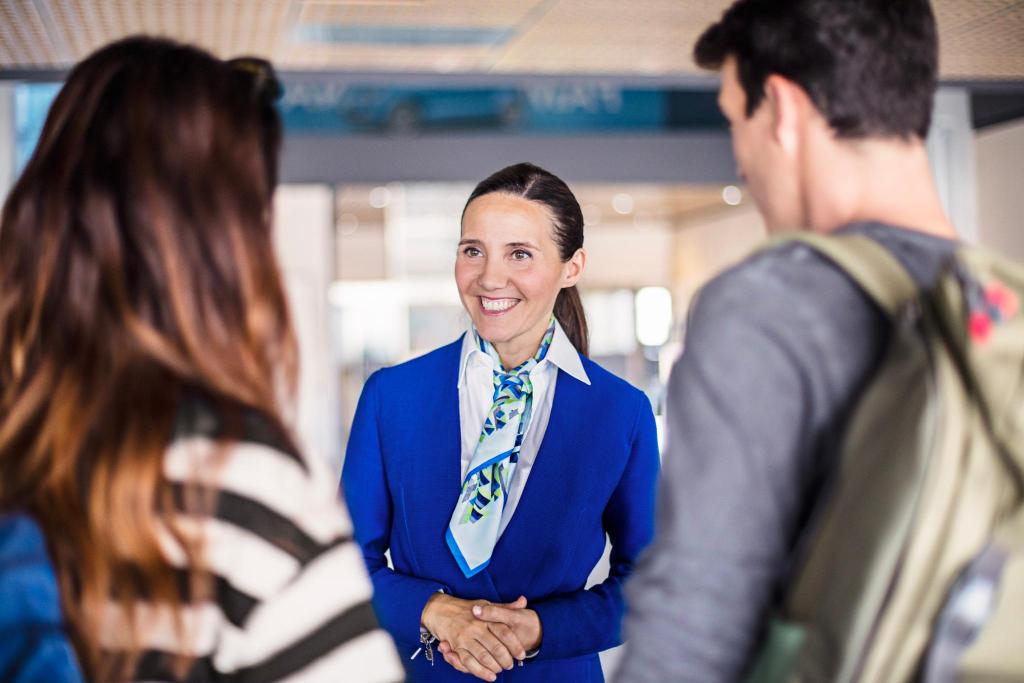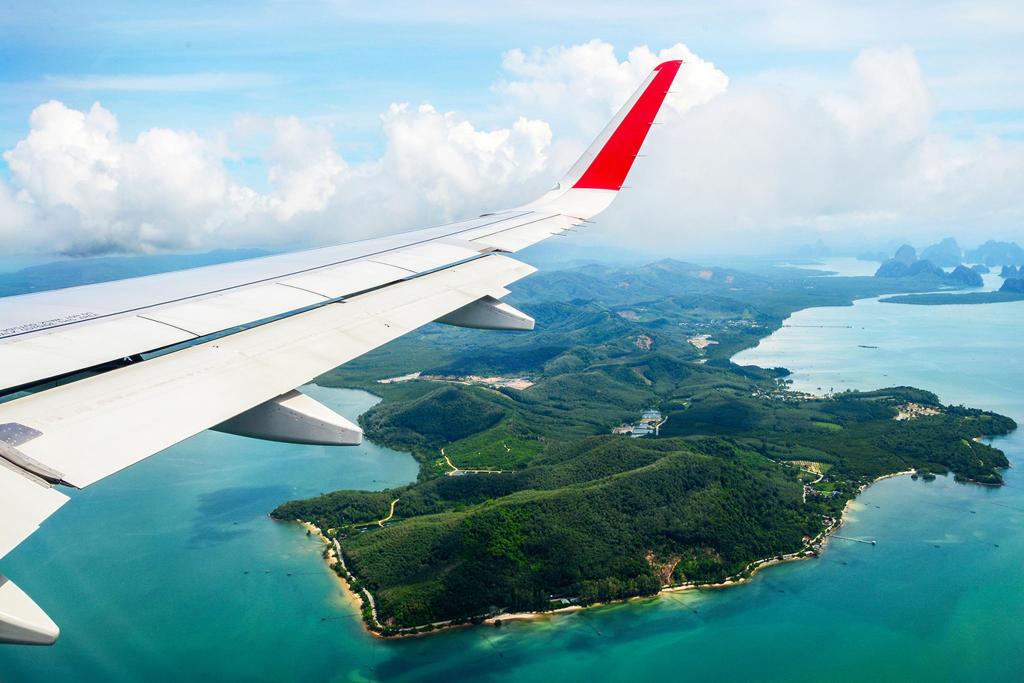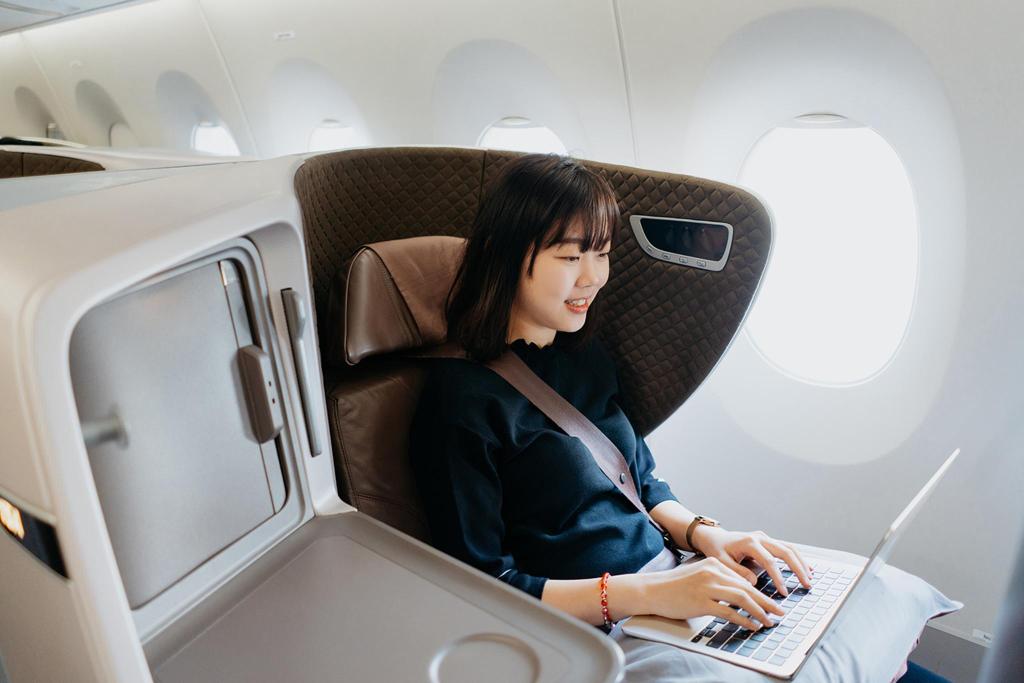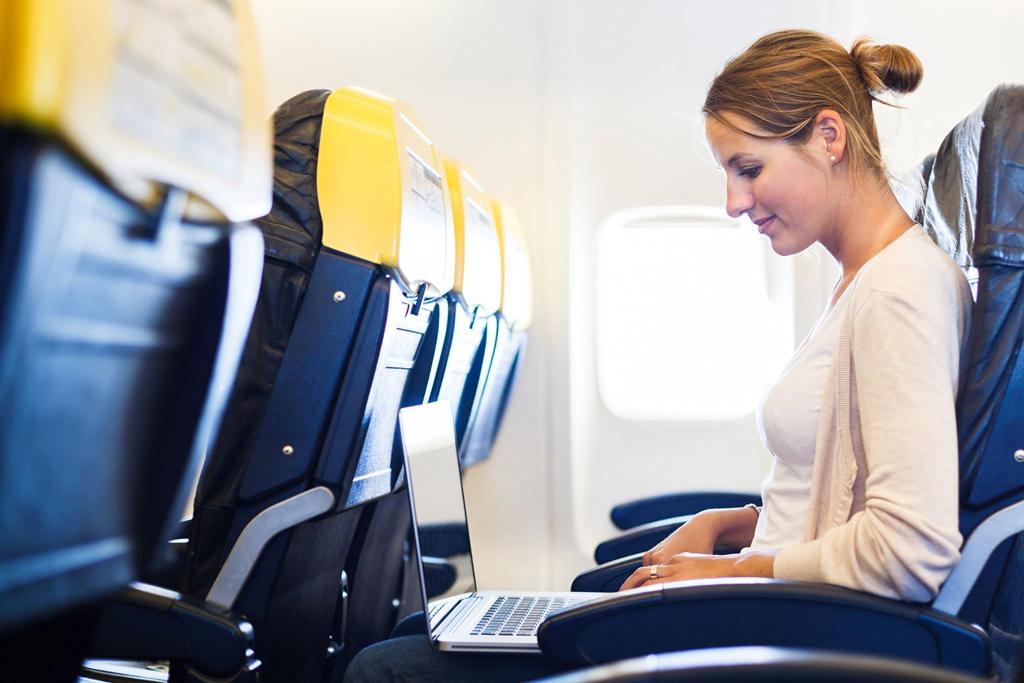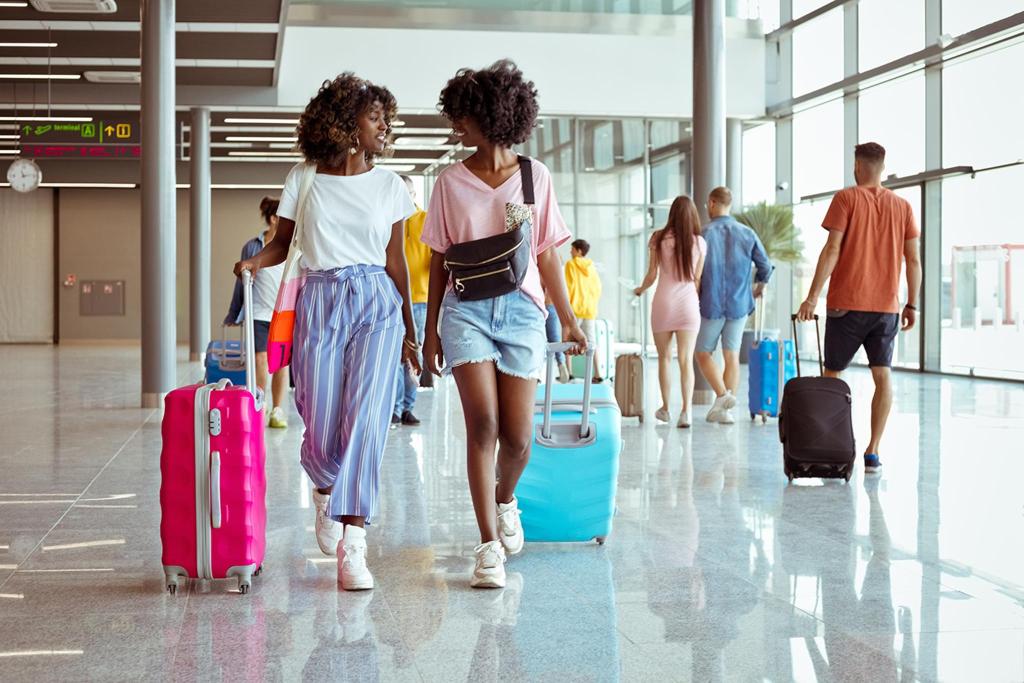
What Can’t You Take On A Plane?
With so many rules and restrictions around what you can and can’t pack for a plane journey, packing can sometimes feel a little overwhelming. Follow the ten top tips below and you’ll be packing like a pro in no time
Packing ahead of a flight can be more than a little confusing. There are weight and size restrictions to contend with and limitations on liquids in your carry-on, not to mention a long list of banned items. Some belongings are allowed in hold luggage only, while others can only be packed in cabin bags – and many items are banned altogether.
So read on to brush up on the things you can’t take on a plane – and those you can – for a smoother, less stressful journey. You can also check the TSA website, and your airline’s policies, for a detailed list.
Dangerous items you can’t take on a plane
It’s no surprise that there’s a long list of dangerous items that you can’t take on a plane for your own safety, and that of other passengers and the crew. These completely banned items generally fall into two main categories: flammables and firearms.
So, what can’t you take on a plane at all, in either hold luggage or cabin bags?
Flammable items banned from both cabin bags and checked luggage include dynamite, chlorine for pools or spas, engines with residual fuel, fireworks, fuel, lighter fluid, bear spray, torch lighters, strike-anywhere matches, vehicle airbags, tear gas, and small compressed gas cartridges (except for personal medical oxygen cylinders). Among the banned items in the firearms category are flare guns, flares, gun powder, and rocket launchers.
Everyday items you can’t take on a plane
While it’s obvious why some of the items above shouldn’t be taken on a plane, there are bans on everyday objects that may catch you by surprise.
So, when it comes to everyday belongings, what items are not allowed on a plane?
- Flammable liquids and gels
- Party poppers
- Spray paint
- Cooking spray
- Samsung Galaxy Note 7 phones
- Spray starch
- Spillable batteries (except those in wheelchairs)
- Turpentine and paint thinner
Things you can only take in your hand luggage
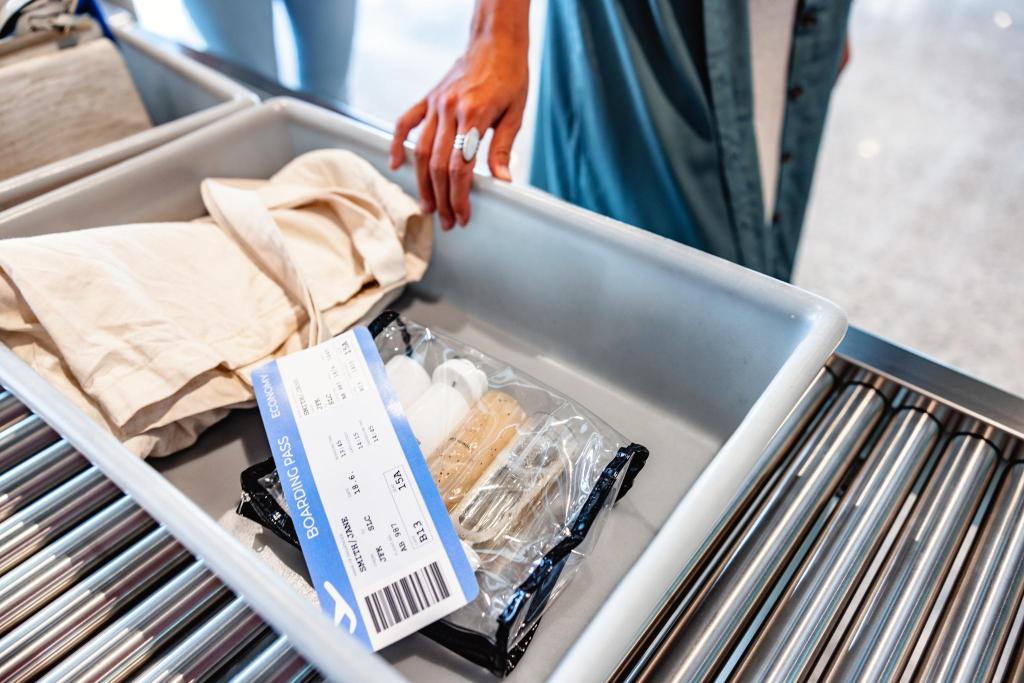
Some items – mostly products containing specific types of batteries, and lighters – are only allowed in cabin bags, and can’t be packed in the hold.
These include:
- Cordless curling irons and straighteners
- Power banks
- Electronic cigarettes and vapes
- Lighters (Arc Lighters, Plasma Lighters, Electronic Lighters, E-Lighters)
- Lithium batteries with more than 100 watt hours
- Air mattresses with a built-in pump
Can you take liquids on a plane in your carry-on? Yes, but there are restrictions. All your liquids must fit into a single, resealable, transparent plastic bag that measures around 20cm x 20cm. None of the individual liquid containers can exceed 100ml. How many liquids can you take on a plane? While there’s no restriction on the number of liquids you can take in your carry-on, the total volume should be less than one liter. If you need to bring more liquids, you can pack as many as you like in your checked bag.
Things you can only take in your checked baggage
There are many everyday items that you can’t take on a plane in your cabin bag, but are accepted in hold luggage.
These include:
- Corkscrews
- Walking sticks
- Knives
- Razor-type blades
- Cast iron cookware
- Large scissors with blades more than four inches from the pivot point
Heading off on a sporting holiday? Be mindful of where you pack your equipment. Sports equipment that could be used as a bludgeon – like bats and clubs – is prohibited in the cabin of the plane and must be transported in checked baggage.
Sporting equipment only allowed in checked bags includes:
- Golf clubs
- Baseball bats
- Bowling pins
- Canoe/kayak paddles
- Snow cleats
- Ski poles
- Pool cues
- Spear guns
Furthermore, there are a number of items that are banned from cabin bags, but the airline may allow you to transport in your hold luggage – depending on their policy. These include gel candles, pepper spray, other self-defensive sprays, and firearms (unloaded, packed in a locked hard-sided container, and declared to the airline at check-in).
If you’re traveling with more than one airline – such as on different legs of the journey, or on your return flight – and want to bring one of the items listed above, make sure you check all their policies.
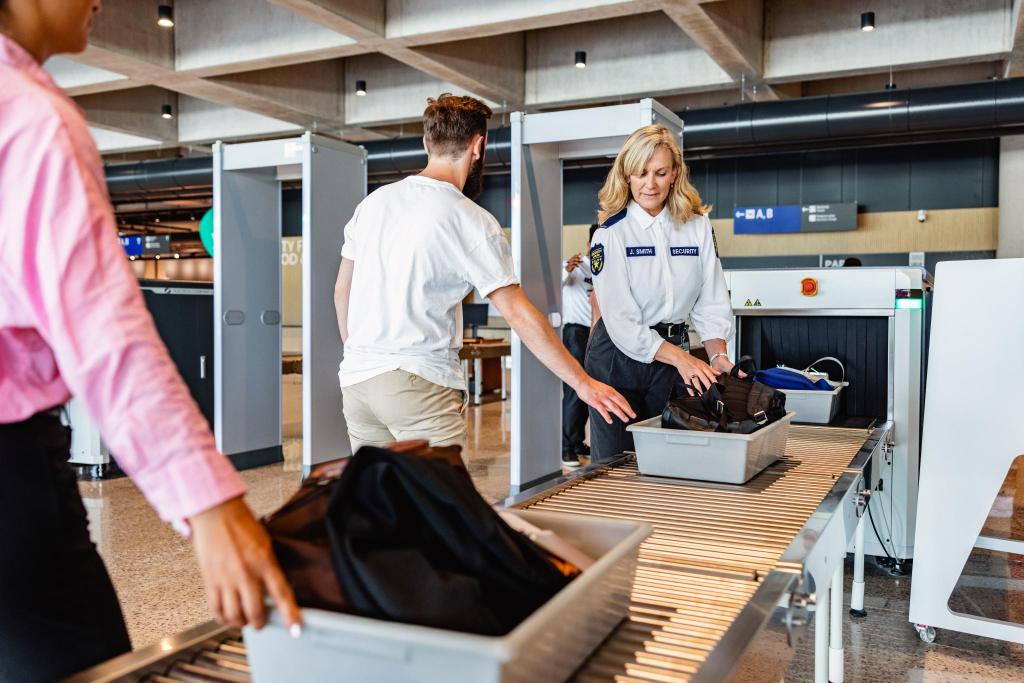
What happens if I pack prohibited items in my hand luggage or checked baggage?
What happens if you pack prohibited large items depends on what those items are. For example, if you’ve accidentally packed too many liquids in your cabin bag or put a power bank in your checked luggage, the likelihood is these will simply be confiscated.
However, you may be fined or denied boarding for carrying certain dangerous materials, and in extreme cases, you can be arrested and face a prison sentence.
How do the rules vary in different countries?
If you’re traveling internationally, it’s super important to check the rules and regulations of your destination country before packing, as some items allowed on US flights – such as certain medications or firearms – may be restricted there.
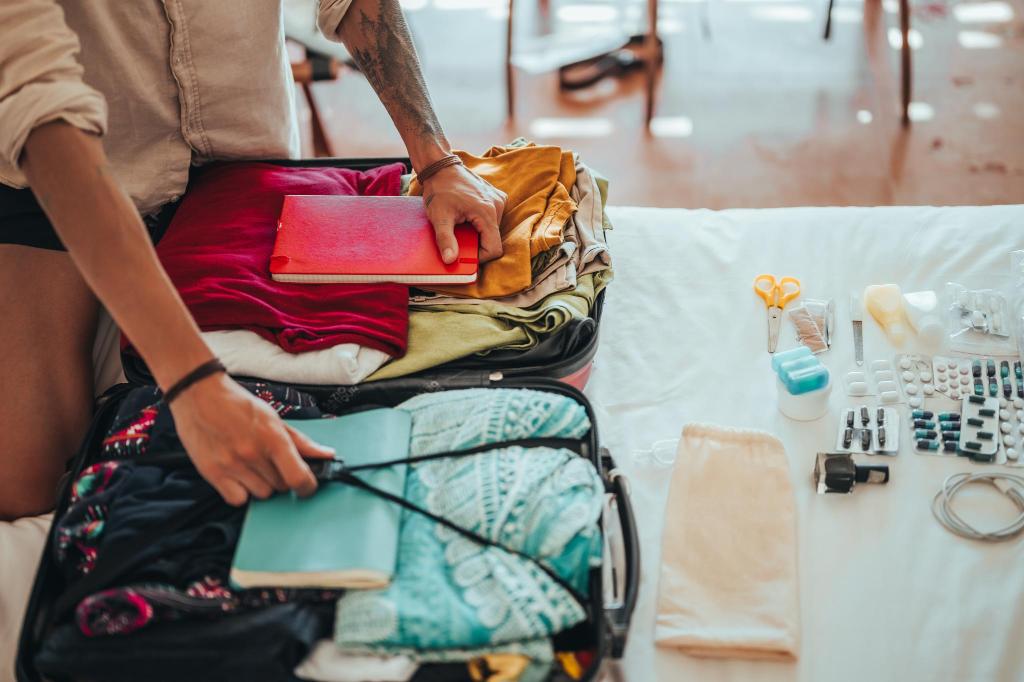
Our top tips for packing your bags like a pro
With so many rules and restrictions around what you can and can’t pack for a plane journey, packing can sometimes feel a little overwhelming.
Follow the ten top tips below and you’ll be packing like a pro in no time.
- Make a packing list: This will help you plan outfits, use your space wisely, and ensure no essentials are left behind.
- Pack your liquids ahead of time: While plastic bags are provided at security, packing your liquids ahead of time makes for a more relaxing airport experience. Buy a quart-sized, transparent, resealable plastic bag and fill it with all the liquids you want to bring in your cabin bag. These liquids should all be in containers of 100ml or less, and total less than one liter.
- Place electronics at the top of your carry-on: At security, you’ll need to remove large electronics from your bag – so ensure they’re easy to reach.
- Use packing cubes, roll clothes, and wear bulky items: This saves space, meaning you can fit more of your belongings in your bag.
- Pack heavy items at the base of your suitcase: Put shoes and bags at the bottom of your suitcase (near the wheels) to avoid wrinkling your clothes.
- Check airline policy: If an item you want to bring feels like it might not be allowed in your cabin bag – perhaps it’s a sharp or flammable object – check airline policy before packing it.
- Always weigh your bags: With airlines having tight size and weight restrictions, you should check your carrier’s policy ahead of time, and always weigh your bag before heading to the airport to avoid extra charges.
- Pack your chargers in your cabin bag: Power banks are only permitted in cabin bags, so ensure these – along with your charging cables – are in your carry-on. This way you’ll be able to keep your devices going, even on a long journey.
- Pack your carry-on for comfort and hydration: Include a sleep mask, headphones, ear plugs, moisturizer, lip balm, and a reusable water bottle to ensure you stay comfortable and hydrated when cruising at 30,000 feet.
- Bring snacks in your carry-on: This helps you avoid having to splash out on expensive airport and in-flight food – but stick to dry solids to avoid having your snacks confiscated at security.
Want more travel hacks? Discover more tips for packing success here.
FAQs about what you can’t take on a plane
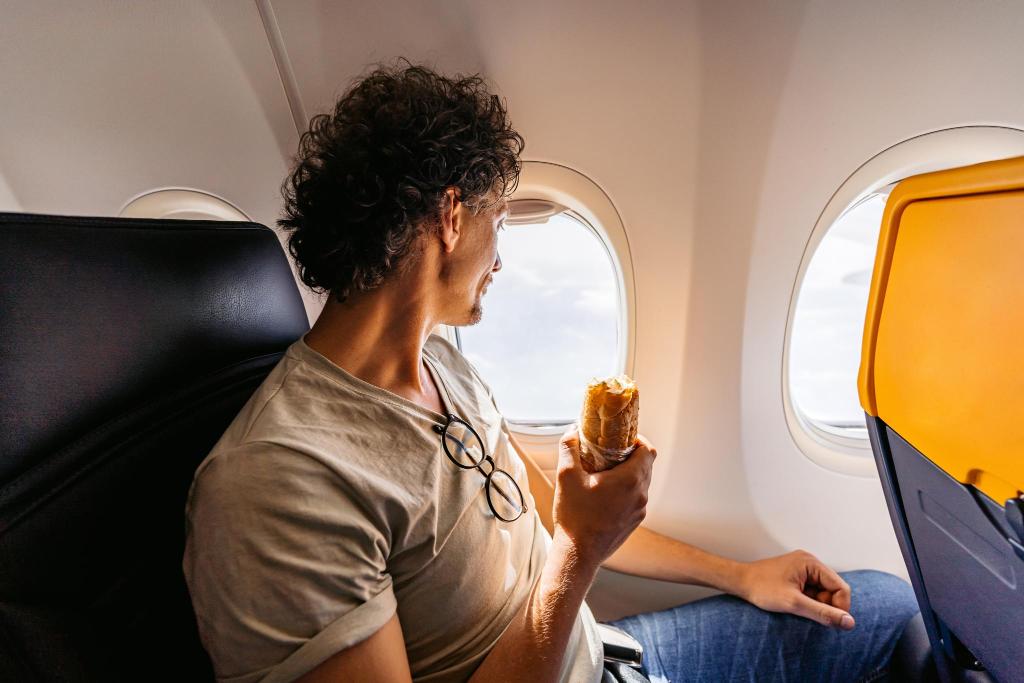
What food can you take on a plane?
It’s a great idea to pack snacks in your cabin bag, as buying food on board a plane can be pricey. However, there are some restrictions on foods – mostly due to liquid content.
Most solid foods can be taken on planes. This category includes bread, chips, candy, cereal, crackers, cooked and vacuum-sealed meat, hard-boiled eggs, pies, cakes, and dried fruit and nuts. However, you should steer clear of packing any food containing liquid or gels, such as cream cheese or soups.
However, a reasonable amount of baby food – such as formula, breast milk, puree pouches, and toddler drinks – is permitted. Food and drinks for your little one don’t need to fit within your clear plastic bag.
Can you take deodorant on a plane?
Yes, you can bring deodorant on a plane, with some restrictions. Solid stick, powdered, and crystal deodorants can be packed in your carry on. However, if your deodorant is liquid, gel, cream, paste, or aerosol, it will need to be in a container of less than 100 milliliters and packed in your quart-sized transparent plastic bag. You can pack any deodorant in your checked luggage – you just won’t have access to it while in the air.
Can you take vapes on planes?
You can take vapes on a plane. In fact, electronic cigarettes and vaping devices are only allowed in cabin bags, not checked luggage. However, the lithium-ion battery in each vape must not exceed a Watt-hour rating of 100 Wh, or for lithium metal batteries, a lithium content of two grams. Passengers carrying vapes are also required to take measures to avoid accidentally activating the heating element of the device. Check with your airline to find out if there’s a limit to the number of vapes you can bring aboard, and – of course – never vape on a plane.
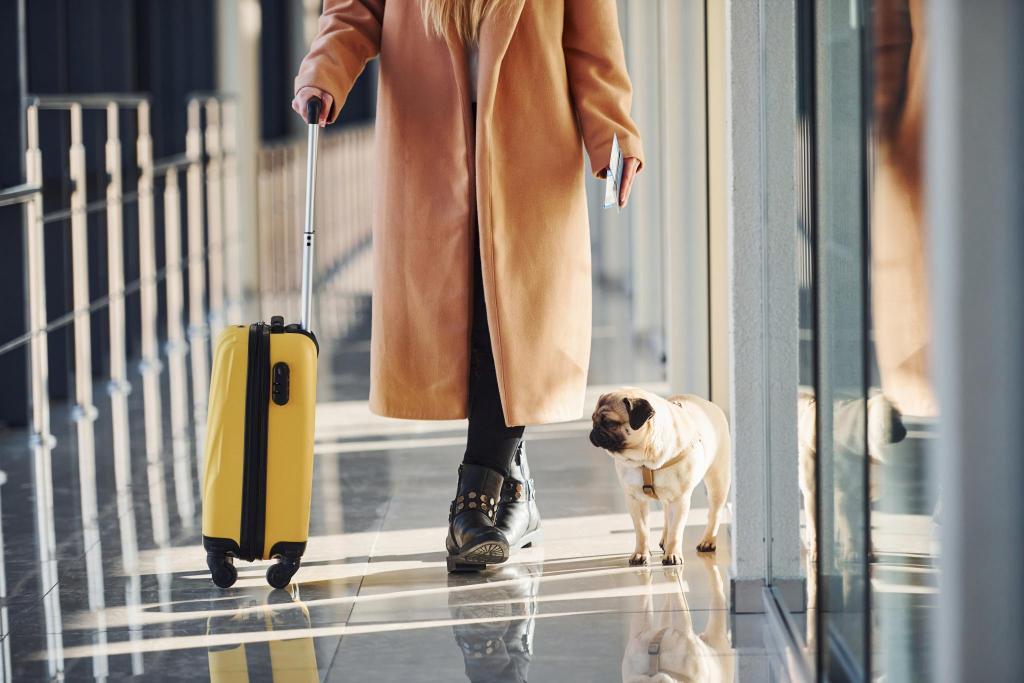
Can I take my pet on a plane?
Whether you can take your pet on a plane depends on a few factors. Some airlines allow pets in the cabin as long as they’re small enough to fit in a carrier that will fit under the seat in front of you. Typically you will have to pay an extra fare in order to bring your furry friend on board. However, while some airlines permit pets on-board for both domestic and international flights, a number of countries don’t allow pets to arrive in-cabin.
Whether your pet is traveling with you in the cabin or as cargo, you will need to present documentation about their health and vaccine history. Check the airline policy, and the regulations of your departure country and destination to find out whether your pet will be allowed on the plane, and what documentation you need to bring.
Can I take medication in my hand luggage?
Yes, you can generally pack medication in your hand luggage. This is pretty straightforward when traveling domestically – just keep your medication in its original, labeled containers and bring copies of all your prescriptions. If you’re traveling with a controlled substance or injectable medication, bring a doctor’s note too. And if your medication is in liquid form, let the TSA officer know at security.
Traveling internationally? Some countries have restrictions on certain types of medications that are widely available in the US. To find out whether you can bring your medication into the country, and what steps you need to take in order to do so, check with the embassy of your destination country. Otherwise, follow the same steps as you would for domestic travel.
Do different airlines ban different items?
What can and can’t you take on a plane? It can vary depending on the airline. There’s a long list of banned items for flights on the TSA website. You cannot bring these items on any flight, no matter the airline. However, airlines do also have their own rules and regulations on what you can and can’t bring on a plane, so if you’re unsure, it’s best to check their policy.

- 独自旅游
- 经济型旅行
- 飞行小贴士
- 冒险之旅
- 都市休闲游
 Top Tips for Booking Multi-City Flights2024年12月30日
Top Tips for Booking Multi-City Flights2024年12月30日 What Happens if You Miss Your Flight?2024年12月10日
What Happens if You Miss Your Flight?2024年12月10日 17 ways to manage a fear of Flying2024年10月23日
17 ways to manage a fear of Flying2024年10月23日 How To Choose The Best Seats On A Plane2024年7月24日
How To Choose The Best Seats On A Plane2024年7月24日 How to Find and Book Affordable Flights2024年7月24日
How to Find and Book Affordable Flights2024年7月24日
猜你喜欢
Learn essential airplane etiquette with our guide to the dos and don'ts of flying. Master plane manners, armrest rules and more for a smooth journey.
Do you need a passport to fly to Alaska? Explore everything you need to know about flying to Alaska, including which airlines fly from the US and more.
Have spare $50,000 to burn? Here are the world’s most expensive plane tickets you can buy and a glimpse at what you get for your money.
Our travel experts share which airlines have incredible business-class seats and how they compare.
Stay productive with these expert business travel tips: maximize comfort, utilize onboard amenities, and optimize your travel time for efficiency.
Discover essential airplane hacks from seasoned travelers. Save time, money and stay comfortable with these expert tips for a smoother flight.








